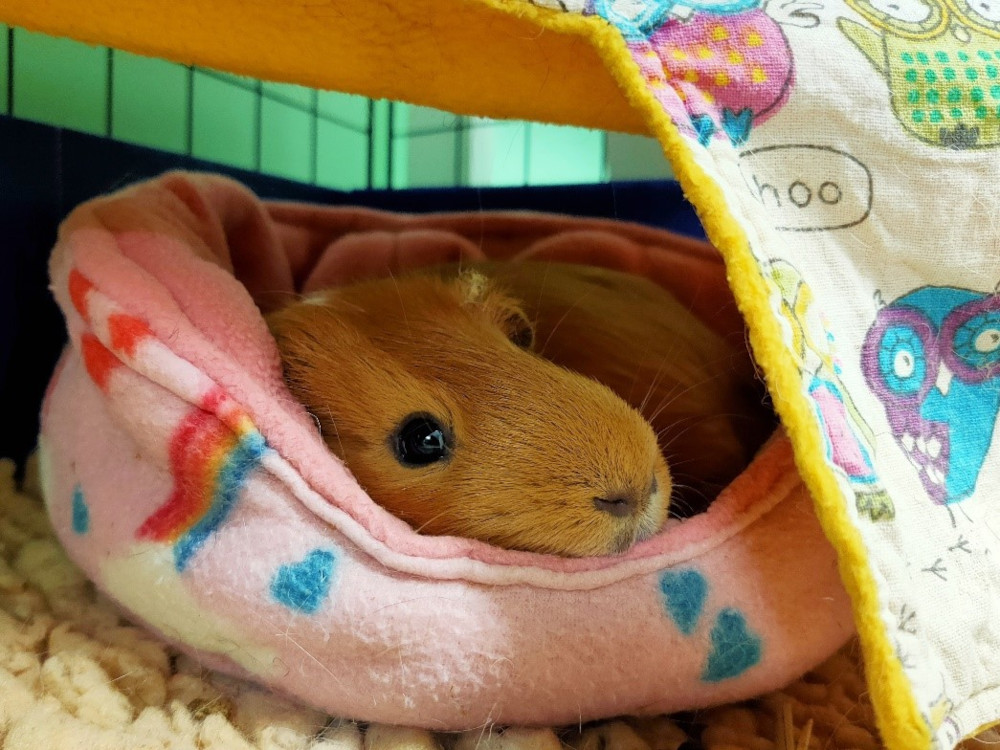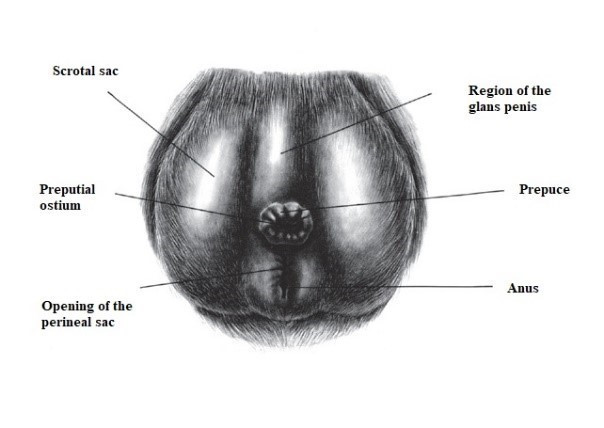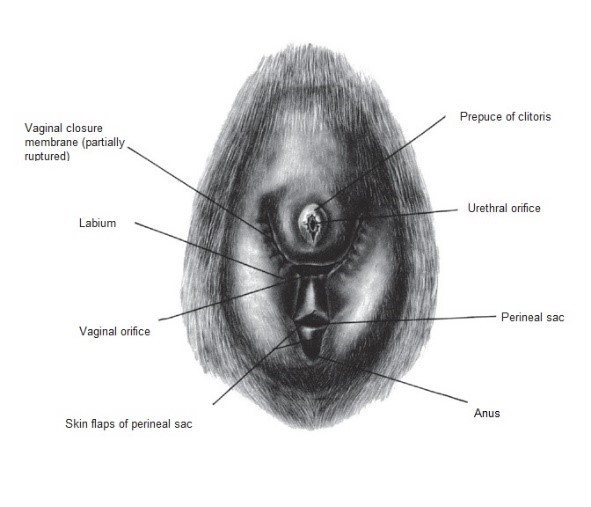
Yes, you should have your guinea pigs desexed! Read on to find out why.
Did you know that:
- Female guinea pigs can breed at the age of 4 weeks (although 8 weeks is more common)?
- Guinea pigs usually have from 2 to 4 pups per litter and can have up to five litters per year? That’s potentially up to 20 pups each year for 4-6 years. Would you be able to find homes for them all? By way of example, in 2023 a pet owner in Western Australia surrendered 130 guinea pigs to the RSPCA, who were all in need of homes.
- Nearly all entire female guinea pigs over 3 years of age will develop ovarian cysts? These cysts can sometimes be very large (several centimetres wide) and cause discomfort by putting pressure on other important structures in the abdomen. They can also cause hair loss and crusting of the teats. More seriously, they can also be associated with changes of the uterus, which are sometimes cancerous.
- The most common reproductive problem seen in entire male guinea pigs is the accumulation of faeces in the anal vestibule, which often becomes abnormally large in older male guinea pigs (‘Boar Butt’). This starts to smell and can cause local irritation and infections, and even urinary tract infections.
How do I stop this?
You can prevent most of these problems by planning your companion guinea pig’s reproductive life. Some suggestions include:
- Keep same-sex guinea pigs i.e., only males or only females. The problem with this approach is that inexperienced sellers and owners can have trouble distinguishing between boy and girl guinea pigs, especially if they are young. With this approach, you avoid the risk and costs of desexing while preventing unwanted pregnancies, but you are not preventing longer term health problems such as ovarian cysts and ‘boar butt’.
- Have your guinea pigs desexed by a vet experienced with surgery in these little animals. Desexing is not as straightforward in guinea pigs as it is in dogs and cats, and an experienced surgeon is necessary to get the best outcomes. Many people elect to get only the males desexed, as this is cheaper and safer than spaying the females. However, this does nothing to help prevent ovarian cysts and other female reproductive problems.
Identifying the sex of guinea pigs
Start off by gently lifting your guinea pig. Supporting their hindquarters and gently holding the guinea pig upright against your chest, gently apply pressure above the genital region:
- If you can extrude the penis and see the testicles in the scrotum, he is an entire male.
- If you can extrude the penis but no testicles are visible, he is probably a desexed male. (As guinea pigs can draw their testes up into the abdomen, you may need to push gently into the belly to see if they descend.)
- If nothing will emerge, you should be able to see her vulva (it looks like an upper-case letter Y). If this is what you are seeing, she is female.


For more information and photos, see this guide from the SEQ guinea pig (cavy) welfare working group.
What is the best age to have my guinea pigs desexed?
Because they can start breeding at 4 weeks of age, it is recommended that 3-5 weeks is the best age to desex both male and female guinea pigs.
A male guinea pig may still be able to reproduce for some weeks after he is desexed. Speak to a veterinarian for advice about how long to wait after the male is desexed before letting him mix with a female, to avoid the risk of an unwanted pregnancy.
References
Bennett R (2008) Neutering Companion Exotic Mammals. Western Vet Conference
Capella V, Lennox A (2006) Gross and Surgical Anatomy of the Reproductive Tract of Selected Exotic Pet Mammals. Proceedings annual conference of the Association of Avian Veterinarians
Doneley B (2018) Tips for desexing rabbits and guinea pigs. World Small Animal Veterinary Association, Singapore Conference

